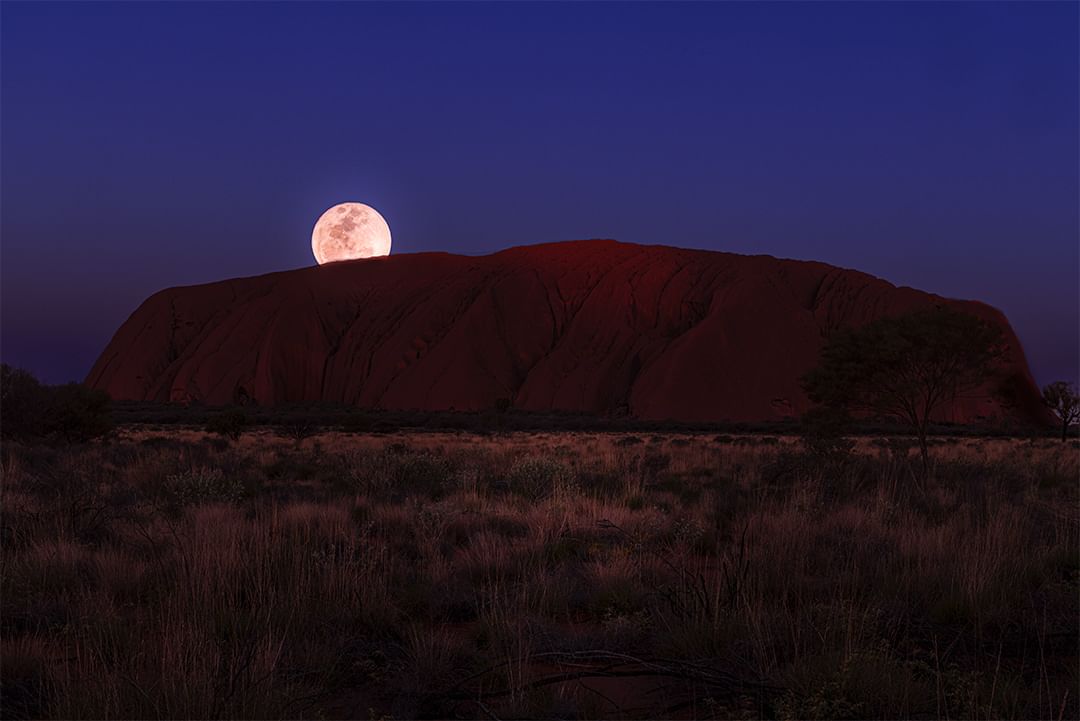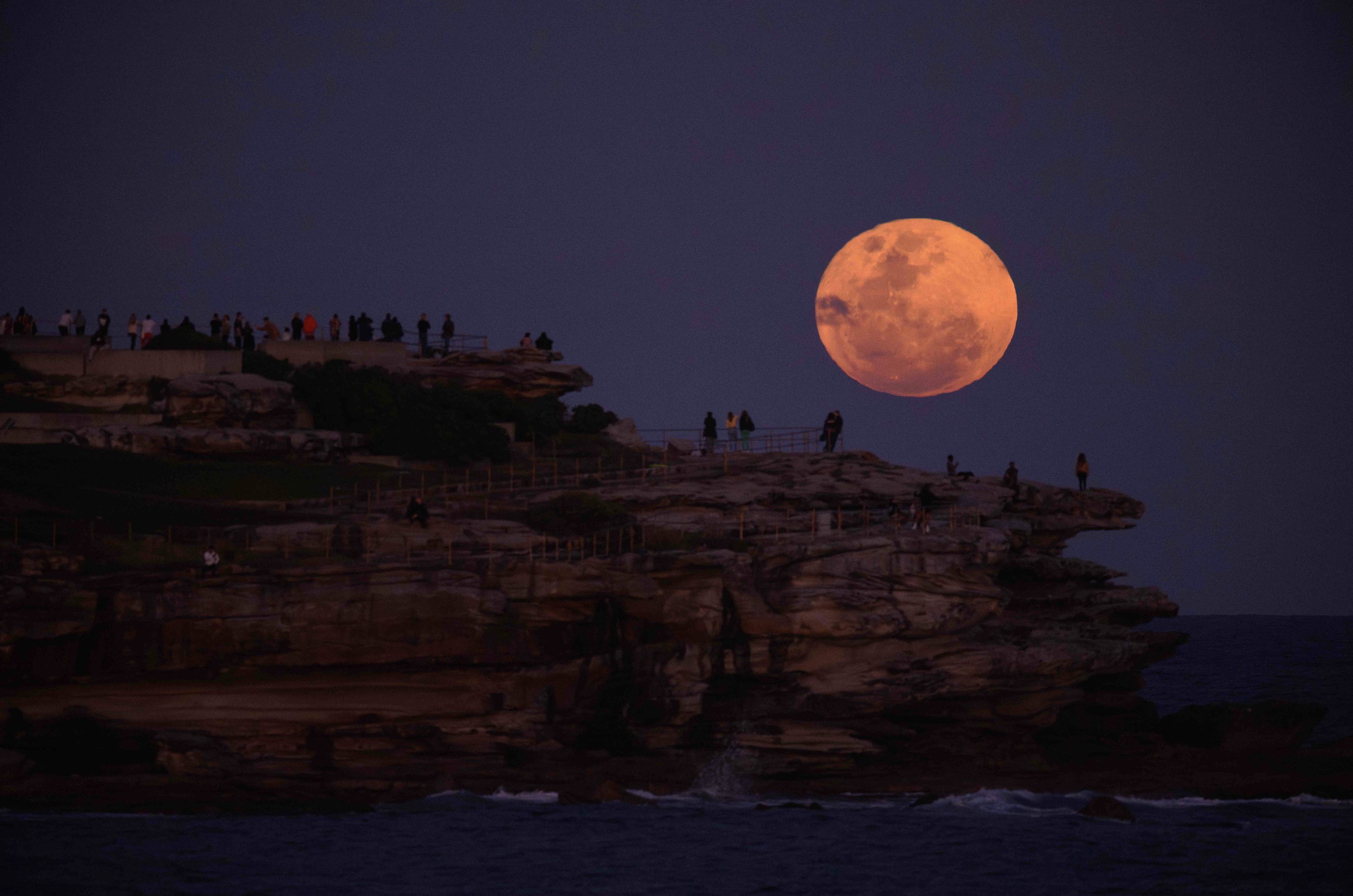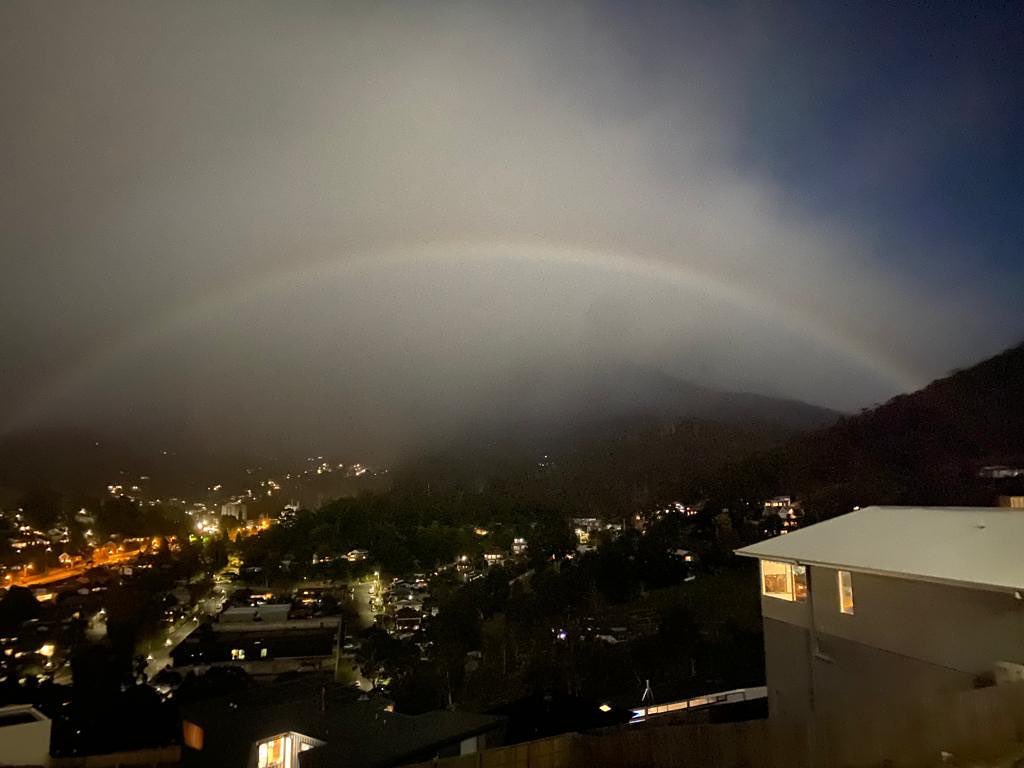Rare lunar rainbow spotted in Hobart
This week’s super blue moon was so bright it made a nighttime rainbow appear over Hobart.
In case you missed it, there has been a lot of talk this week about the super blue moon that appeared in Australian skies on Wednesday and Thursday nights.
The term ‘super blue moon’ simply refers to a blue moon, which is the second full moon in a calendar month, coinciding with a supermoon, which is a full moon that appears around 7% larger and a bit brighter than a regular full moon.
The extra brightness and size of this week’s super blue moon made it stand out in the night sky, especially when it was sitting near the horizon around moonrise and moonset.
The image below shows the scene in central Australia as the supermoon crept out from behind Uluru in the Red Centre on Wednesday night.

Image: When the moon is blue at Uluru. A super blue moon rises behind Uluru in central Australia on Wednesday, August 30. Source: @hummerstonneil / Instagram
Impressive scenes like this were captured across Australia, including the image below from Ben Buckler Point at Bondi Beach.

Image: Super blue moon rising from Bondi Beach on Thursday night. Source: AAP / Dan Himbrechts
But as impressive as these photos of the moon are, one of the best images of the event was captured by looking away from the moon.
The photo below shows a lunar rainbow that appeared over Hobart on Wednesday night when the moon was still low in the night sky.

Image: Lunar rainbow in Hobart on Wednesday night. Source: @njww10 / Instagram
Lunar rainbows, sometimes called moon rainbows or moonbows, are like normal rainbows that you see during the day, but they are caused by moonlight instead of direct sunlight.
The lunar rainbow appears when light from the moon is reflected and refracted by water droplets in the sky. They are only visible when the light from the moon is strong enough, which usually only happens during a full moon.
If you want to see a lunar rainbow, look for some low cloud or light rain and stand with the full moon behind you, while it is still low in the sky.
You can track moon phases for your location in the Weatherzone App.